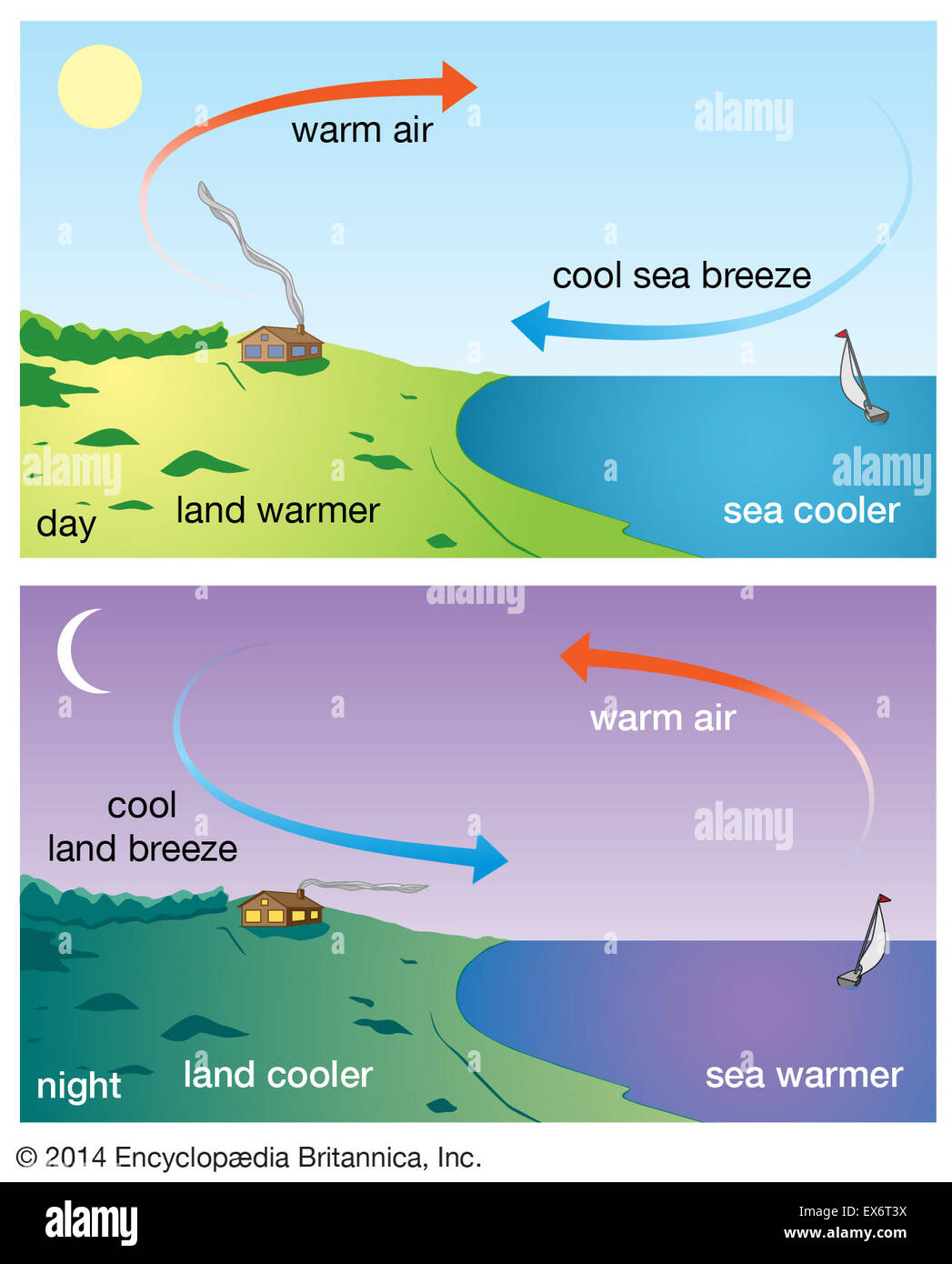

67 used the Weather Research and Forecasting (WRF) model to simulate the sea–land breeze and thermal environment, further analyzing its effect on the UHI. For instance, Sangobanwo 66 revealed that coastal cities are more susceptible to UHIs due to sea–land breezes and are generally more prone to extremely high temperatures than inland cities. As they frequently occur in coastal cities, previous research has attempted to address the interactions between sea and land breezes and UHIs 62, 63, 64, 65. Sea and land breezes, representative of typical local winds in coastal cities and which alternate during days and nights, refer to the mesoscale circulations formed via the temperature difference between the ocean and land. Recent studies have shown that urban ventilation can improve urban thermal comfort and alleviate the UHI effect 58, 59, 60, 61. Therefore, the second classification method was used herein and building and land-use data were combined to classify the LCZs. Although obtaining data for this method is more difficult, the classification results correspond well with the actual field conditions. The second method uses a geographic information system (GIS) to calculate building parameters and vegetation indicators to divide LCZs into smaller study units 54, 55, 56, 57.
#LAND SEA BREEZE SOFTWARE#
The first uses the World City Database Portal Tool (WUDAPT) 50, 51, 52, 53: the software required for this method is free, and the data are easily obtainable, but its spatial resolution is low thus, it is only suitable for large-scale research. Presently, LCZ classification methods can primarily be divided into two types. This classification scheme has been used worldwide as an international standard for climate-related research 41, 42, 43 and is widely used in UHI research 44, 45, 46, 47, 48, 49. The local climate zone (LCZ) classification scheme constitutes a climate-related land cover classification system for urban structures, which was first proposed by Stewart et al. However, owing to rapid urbanization in China, available morphological and land-use data are inevitably unstandardized, difficult to obtain, or cannot be used for urban planning or environmental research. UHIs are affected by many factors, including architecture, climate, and land map 32, 33, 34, 35, 36, 37, 38. These data have become the main source for daytime and nighttime UHI research, respectively therefore, AST_08 data were used in this study to conduct land surface temperature inversion calculations. ASTER data have a high spatial resolution and can provide suitable night images. Therefore, MODIS data are more suitable for large-scale research on regional thermal environments.

However, the former is difficult to acquire at night, whereas the latter has a low resolution and cannot accurately analyze thermal environments at the urban-block scale. Presently, studies on urban thermal environments commonly use Landsat TM/TIRS or MODIS data for land surface temperature inversion and UHI intensity (UHII) calculations, resulting in the development of heat island mitigation strategies 18, 20, 23, 24, 25, 26, 27, 28, 29, 30, 31. Depending on the source of the image sensor, TIR images can include high, medium, and low spatial resolution data, such as Landsat/TIRS (100 m), ASTER (90 m), GF5/VIMS (40 m), HJ-1B/IRS (300 m), and MODIS (1000 m). Owing to the advantages of this method, such as its spatial continuity and easily accessible images, it has been widely used in research on UHIs 16, 17, 18, 19, 20, 21, 22.

Compared with traditional meteorological station observations, thermal infrared (TIR) image data can retrieve land surface temperature more effectively. Land surface temperature is an important parameter for urban thermal environment research 15 therefore, many international studies have investigated methods to determine it. The UHI phenomenon was first discovered by Howard 14, who conducted temperature observations in London, UK, and urban thermal environments have been the subject of active research ever since. In China, as the population increases annually 4, the areas under impervious layers have also witnessed increases, causing surface temperatures to increase and exacerbate the urban heat island (UHI) effect, extreme weather, and heat weaves 5, 6, 7, 8, all of which affect human comfort and threaten human health 9, 10, 11, 12, 13, and even cause death. Urbanization has been accelerating since the beginning of the 21st century 1, 2, 3.


 0 kommentar(er)
0 kommentar(er)
